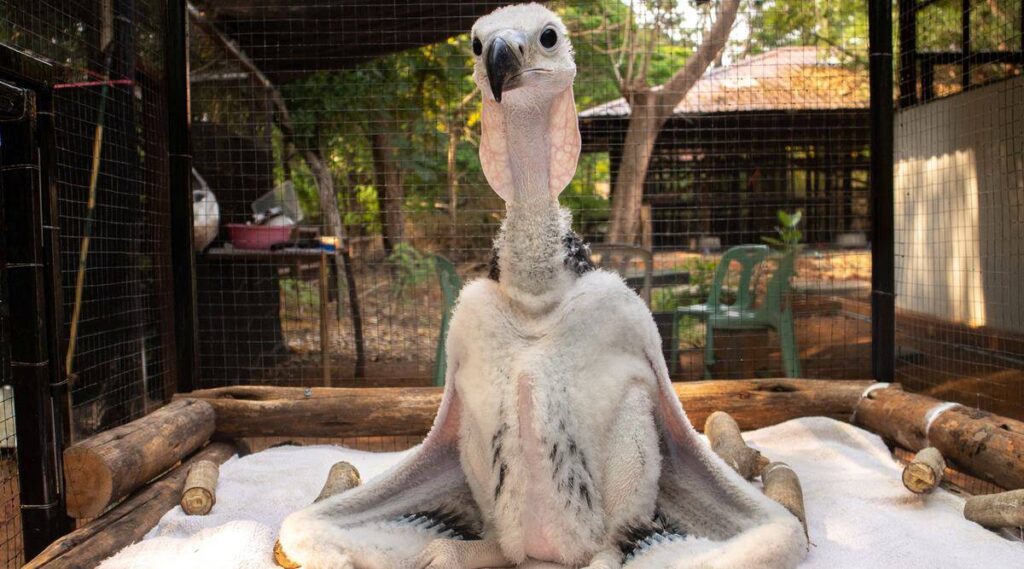A Thai zoo hopes to let endangered vultures fly again
Four times a day, Thai conservationist Wachiradol Phangpanya dons a black, long-sleeved shirt, red gloves, and a red balaclava, hoping to feed the endangered red-headed vulture to her young. The pink chick, covered in a white plumage that turns to black feathers as it grows, is the first red-headed Asian king vulture to be bred in Asia, and the second in the world.
Wachiradol and his colleagues at the Nakhon Ratchasima Zoo in northeastern Thailand want to ensure that any hatchlings in captivity are not imprinted on humans, so they are better prepared for eventual release into the wild. “It is necessary to disguise ourselves as a bird so that we look closer to what their parents look like,” said Vachiradol, adding that this is the best opportunity to develop the bird’s natural instincts.
He feeds it rabbit, deer, chicken, and Rat meat mimicking its diet in the wild. After feeding, the chick basks in the sun for vitamin D, which is essential for its physical and behavioral development, Vachiradol said. “Is its diet nutritious enough? Or receiving more? “Every moment, concerns continue,” he said. As a scavenger, the red vulture plays a vital role in the ecosystem by eating animal carcasses.

However, hunting and changes in its habitat have led to the extinction of the species. The wild in Thailand and worldwide have declined significantly. To increase the red-headed vulture population After nearly two decades of efforts, the zoo is starting to see results, with another egg hatched in conservation by its parents.
The conservation team hopes it can create. “Enhancing the ecosystem of Huai Kha Kheng Wildlife Sanctuary, a UNESCO heritage site, is the most critical factor in our success,” said Zoo Director Thanachon Kensing. The park in the west of Thailand was once home to the largest community of Asian king vultures. “We want to see the Asian king vulture once again fly in the skies of Thailand,” he said.
